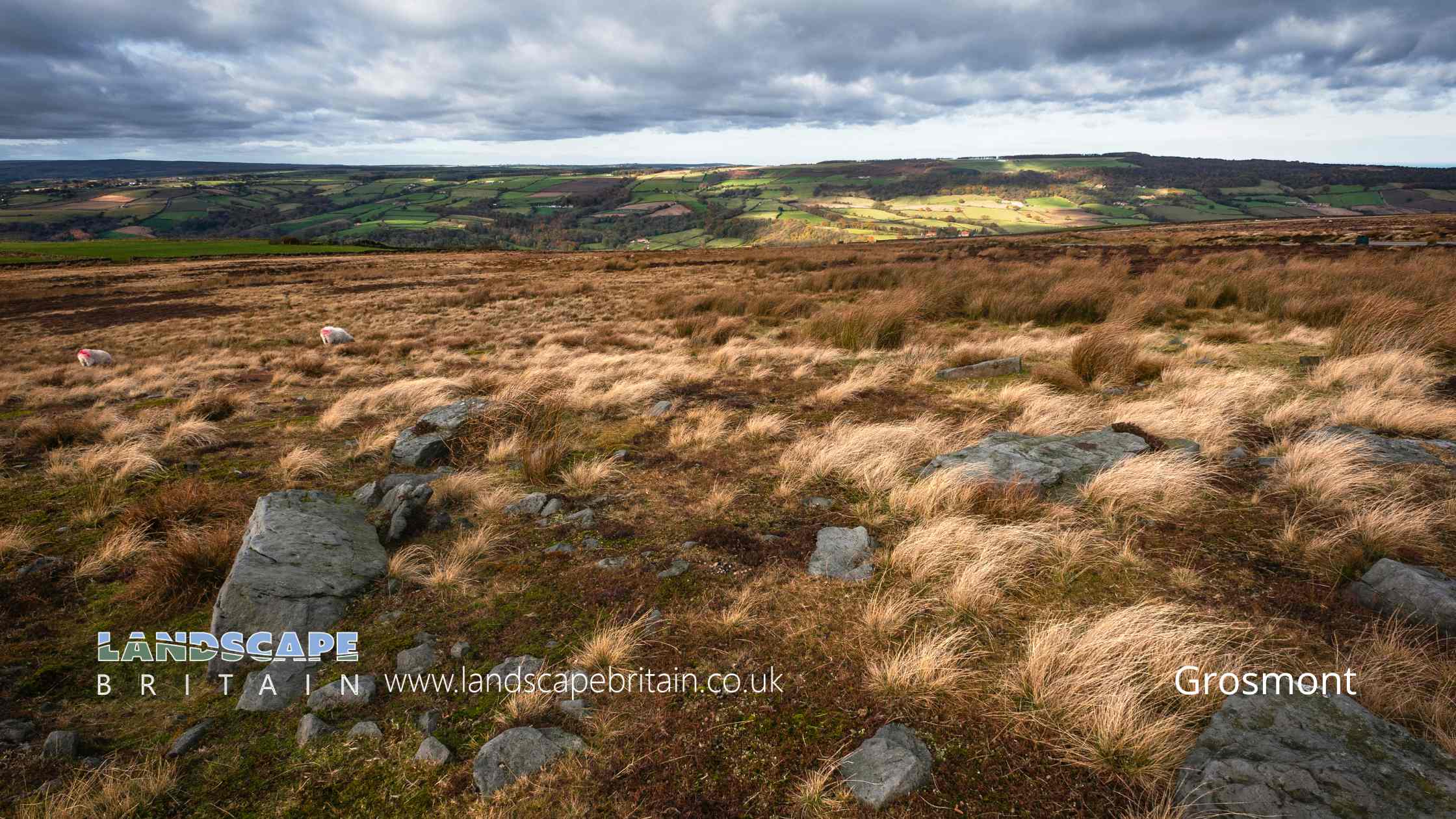
Grosmont
Grosmont
Grosmont, nestled in the heart of the North York Moors National Park, near Whitby, is a village steeped in rich history and natural beauty. Originally known as ‘Growmond’, the village’s name evolved over time to its current form, Grosmont. This name change reflects the village’s historical evolution, deeply intertwined with the development of the ironstone mining and railway industries in the 19th century.
The village’s industrial heritage is most prominently symbolized by the Grosmont Iron Works, established in the 1830s. These iron works played a crucial role in the area’s development, driving economic growth and attracting workers and their families, which helped the village to grow. Despite the closure of the ironstone mines in the late 1960s, the remnants of this industrial era, including kilns and other structures, remain as historical landmarks, telling the story of the village’s past.
Grosmont is also renowned for its significant role in the history of the railway. The village is home to the North Yorkshire Moors Railway, a heritage steam railway that operates through the stunning landscapes of the North York Moors. This railway has been meticulously preserved and serves as a living museum, offering visitors a unique glimpse into the golden age of steam. The Grosmont station, with its traditional features and historic charm, is a focal point for railway enthusiasts and tourists alike.
Beyond its industrial heritage, Grosmont is enveloped by the natural beauty of the North York Moors. The village serves as a gateway to explore this breathtaking landscape, offering numerous walking trails that meander through the moorlands and woodlands. The tranquility and scenic beauty of the area make it a popular destination for hikers, nature lovers, and those seeking a peaceful retreat from the hustle and bustle of urban life.
Culturally, Grosmont retains a strong sense of community, with a variety of local events and activities that bring residents and visitors together. The village hosts an array of small shops, cafes, and traditional pubs, where the warmth and friendliness of the local people are evident. These establishments not only cater to the needs of the community but also offer a warm welcome to tourists, adding to the village’s charm.
In conclusion, Grosmont, near Whitby, is a village that beautifully blends its historical significance with the natural splendor of its surroundings. It offers a unique experience that encompasses industrial heritage, railway history, and the captivating beauty of the North York Moors. Whether for its historical landmarks, scenic walks, or the charm of steam travel, Grosmont continues to be a cherished destination for visitors from around the world.
Created: 7 January 2024 Edited: 26 March 2024
Grosmont
Local History around Grosmont
There are some historic monuments around including:
Two Howes: two round barrows on Goathland MoorLady Cross wayside cross, north of the A171 and 20m west of the Barnby turn-offRoman Fort on Lease RiggRound barrow on Stony Rigg, 460m south of Greenlands FarmCairns on In Moor, Struntry CarrRound cairn on Skivick Crag, 380m south west of Wheeldale LodgeRound barrow 860m south west of Dun BogsRound barrow on Dunsley Moor, 800m south west of Skelder CottageFoss Castle: a motte and bailey, precursor to Old Mulgrave CastleRound barrow adjacent to the Whinstone Ridge on Goathland Moor, 600m SSW of Breckon HoweAsh Holm alum works, 350m south east of Mulgrave CastleBeggar's BridgeRound barrow on Dunsley Moor, 160m west of Skelder CottageCairnfield on Howl Moor 510m south of Wheeldale Lodge, including an unenclosed hut circle settlement, field system and round burial cairnsRound barrow on Dunsley Moor, known as Swarth HoweRound barrow on Goathland Moor, 240m west of Collinson BieldStanding stone 470m north east of High Farm, known as Wade's Stone'Pen Howe' tumuliTwo round barrows E of Coopers QuarriesRound barrow on Wheeldale Moor, 1250m west of Wheeldale LodgeRound barrow at Lady Cross, 730m south west of Dun BogsHigh Bride StonesSandsend alum houseRound barrow and two standing stones in Hutton Mulgrave Plantation, 115m west of Swarth HoweRound barrow on Ugthorpe Moor known as Loose Howe, 130m south west of Day Well HouseOld Mulgrave Castle: an enclosure castle incorporated into an 18th century planned landscapeEnclosure on In Moor, Struntry CarrWidow Howe: two round barrows on Widow Howe RiggCairnfield, including a standing stone, round barrow, round cairn, enclosed field and part of Cucket medieval deer park boundary, 360m north of Eden HouseAllan Tofts cairnfield, field system, burial cairns and prehistoric rock art, immediately south of Morton CloseLow Bride StonesGroup of seventeen tumuli to the N of Greenlands Howe, on the east side of Sleights MoorRound barrow on Wheeldale Moor, 1150m west of Wheeldale LodgeRound barrow on Ugthorpe Moor, 200m south west of High Park FarmFoster Howes bowl barrow (north) on Sneaton High MoorRound barrow on Goathland Moor, 360m west of Collinson BieldFoster Howes bowl barrow (central) on Sneaton High MoorTwo round barrows 1/4 mile (400m) NE of Horse Mire Head FarmTwo 'Flat Howes' round barrows, Sleights MoorThree Howes round cairnsSimon Howe: a round cairn on Goathland Moor, two associated round barrows, a standing stone and a stone alignment'Breckon Howe' round barrow, Sleights Moor'Greenlands Howe' round barrow, Sleights MoorWayside cross known as Swarth Howe Cross, 500m north east of MoorcockRobbed Howe bowl barrow, 500m north of Robbed Howe Slacks on Sneaton High Moor.



